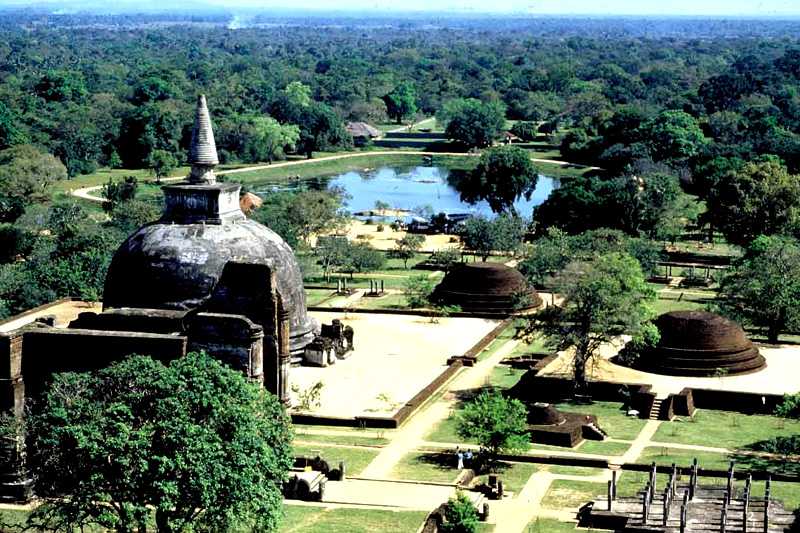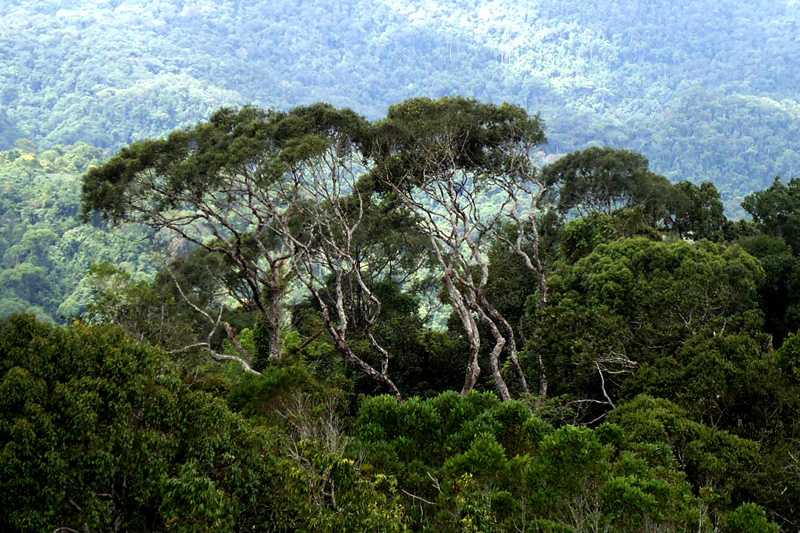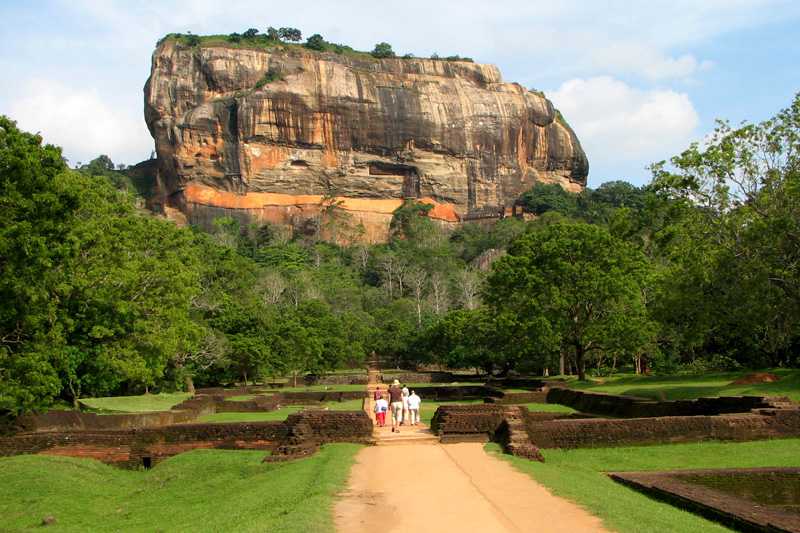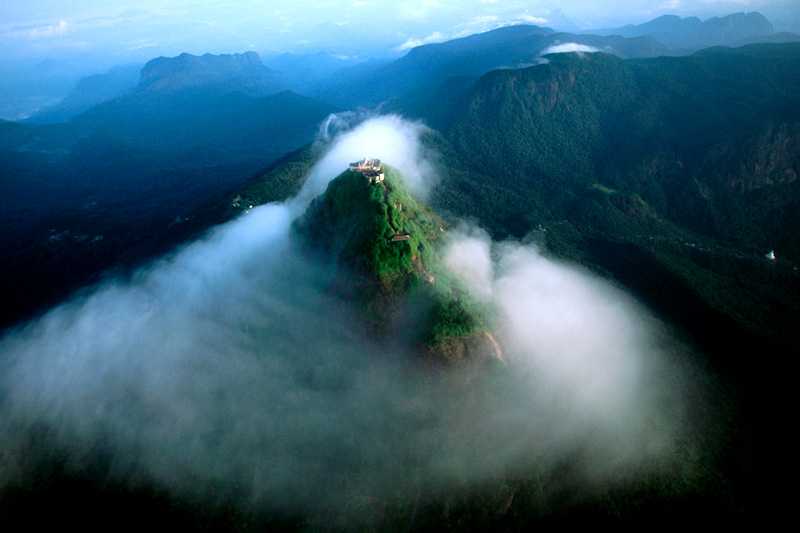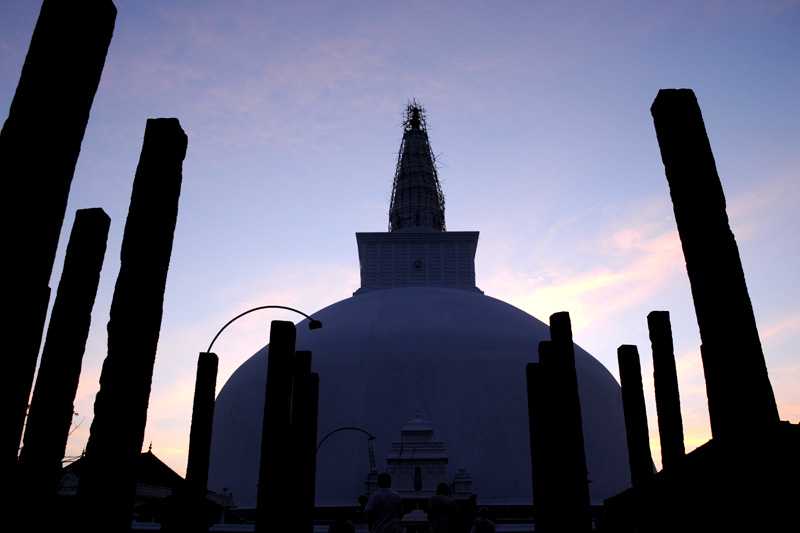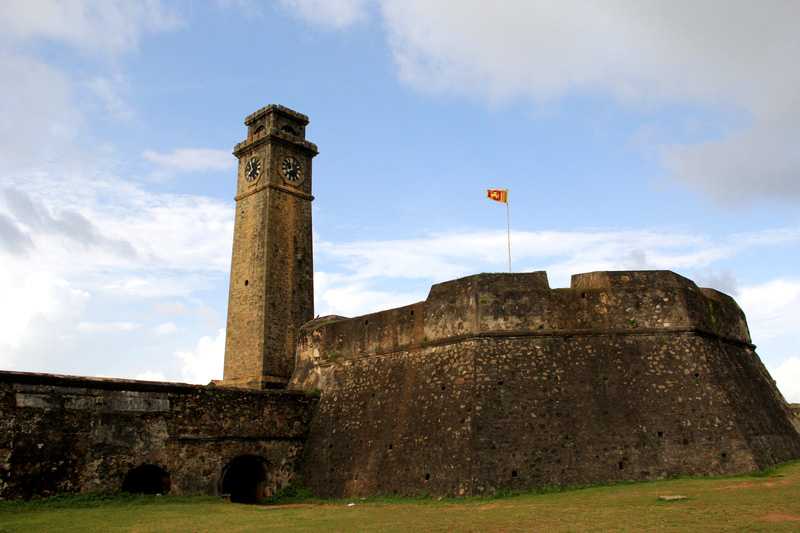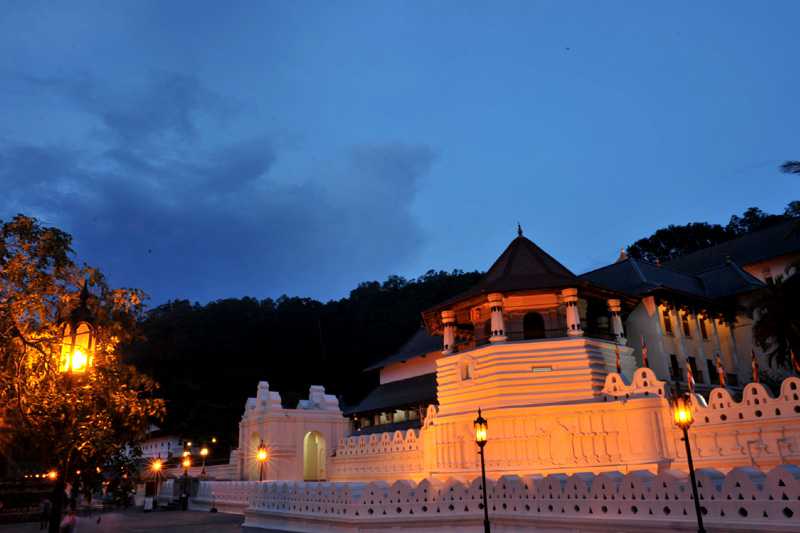Dambulla
Dambulla is part of the Cultural Triangle. It houses the gigantic Dambulla Cave Temple declared a UNESCO World Heritage site. The Dambulla caves date back to 1st century BCE. Originally it was the refuge of King Walagamba, and the caves were later converted into a rock temple. It houses beautiful frescoes and an imposing 15-metre long reclining Buddha and Hindu deities. The caves are considered to be the finest storehouse of Sinhala art and sculpture.

It has five caves under a vast overhanging rock, carved with a drip ledge to keep the interiors dry. In 1938 the architecture was inflated with arched walkways. Inside the caves, the ceilings are painted with complex patterns of religious images following the contours of the rock. There are images of Lord Buddha, and Bodhisattvas, as well as various gods and goddesses. Five caves are converted to shrine rooms. The caves, built at the base of a 150 metre high rock during the Anuradhapura (1st Century BCE to 993 AD) and Polonnaruwa times (1073 to 1250 AD), are the most inspiring of many cave temples in Sri Lanka.
The largest cave measures about 52 metres from east to west, and 23 metres from the entrance to the back, this amazing cave is 7 metres tall at its highest point. Hindu deities are also represented here, and the kings Walagamba, Nissankamalla, and of Arhant Ananda; the Buddha's most devoted disciple. Within these shrine rooms is housed a collection of one hundred and fi fty statues of the Buddhist Order and the country's history. These statues and paintings represent many eras of Sinhala art and sculpture. The Buddha statues are in varying sizes and outlook; the largest is 15 metres long. One cave has over 1,500 paintings of the Buddha covering the ceiling.
The Dambulla cave monastery is still functional and remains the best-preserved ancient structure in Sri Lanka. This complex dates from the 2nd and 3rd Centuries BCE; it was established as one of the largest and most important monasteries. King Walagamba converted the caves into a temple in the 1st century BCE. Exiled from Anuradhapura, he sought refuge here from South Indian invaders for 15 years. After reclaiming his capital, the King built a temple in thankful worship. Many other kings added to it later and by the 11th century, the caves had become a major religious centre. King Nissankamalla gilded the caves and added about 70 Buddha statues in 1190 AD. During the 18thcentury, the caves were restored and painted by the Kandyan Kings.
A hike to the highest Rose Quartz Mountain Range in South Asia offers the pleasure of a striking view of the neighbouring area for miles around. With a history spanning over 1,000 years, Jathika Namal Uyana, also known as the Ironwood Forest, offers a fascinating trek through a deep jungle comprising of the Sri Lankan national tree, the Na (Iron wood). The forest is of important ecological extent and is the focus of studies by ecologists and students of nature.







